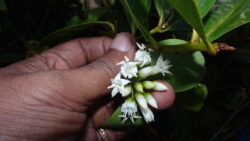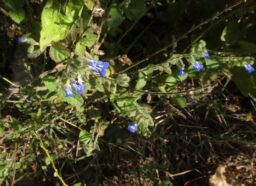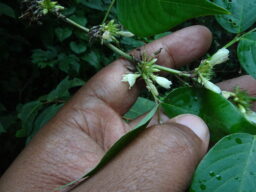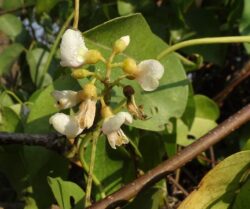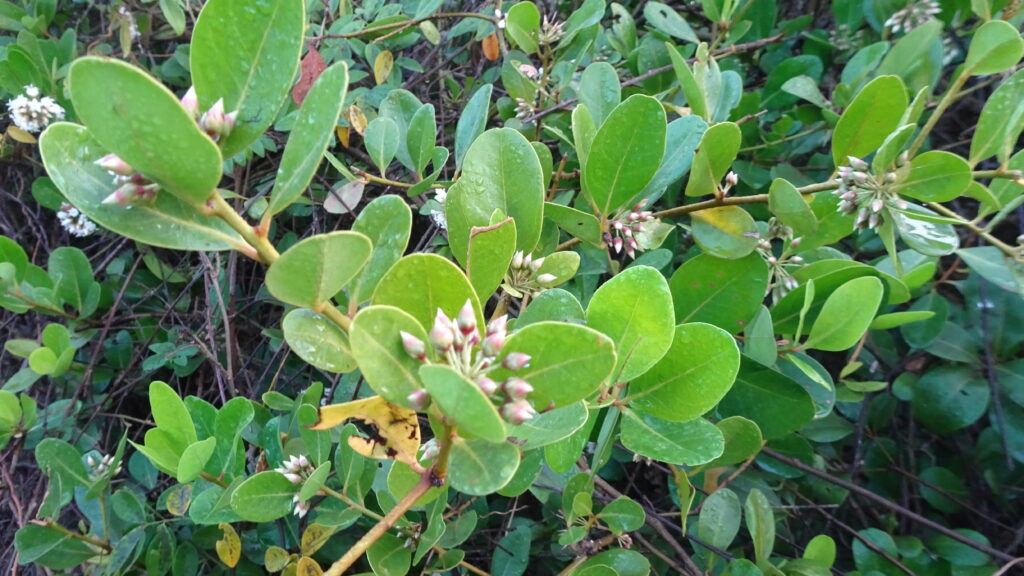
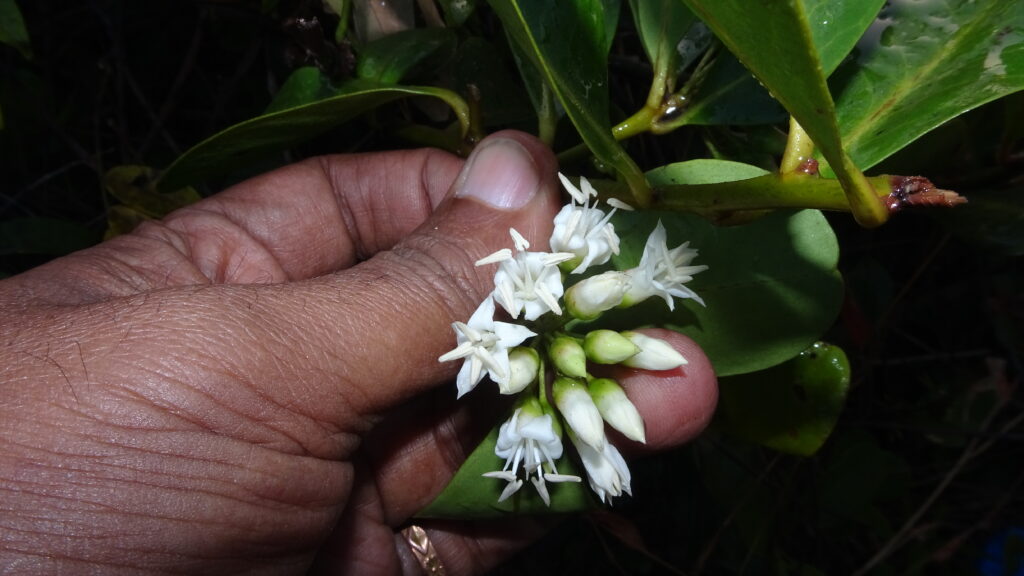
Tamil name: Narikandal.
This shrub-sized mangrove plant grows to a height of about 2.5 meters and is commonly seen in coastal and estuarine areas. I saw this plant in Goa, at a place called Chorao. The leaves are simple and arranged spirally. Leaves are elliptic to obovate in shape; the leaf apex rounded or emarginate and the leaf base cuneate. The inflorescence is in the form of axillary umbels. The flowers are star-shaped and white. The flowers have five each of sepals, petals and anthers. The fruit is a capsule tapering to a pointed apex and greenish yellow in color. It encloses a single seed. Unlike other mangrove plant species belonging to Rhizophoraceae and Avicennioideae, this species does not have pneumatophores or breathing roots. While Rhizophoraceae have polypetalous flowers, this species has gamopetalous flowers. Also, the anthers conspicuously stick out of the tubular flower. In the case of Rhizophoraceae, vivipary is exhibited–the embryo grows out of the seed coat and then out of the fruit while still attached to the parent plant. In the case of A. corniculatum, it exhibits cryptovivipary, in which embryo emerges from the seed coat but not out of the fruit while still attached to the parent plant.

